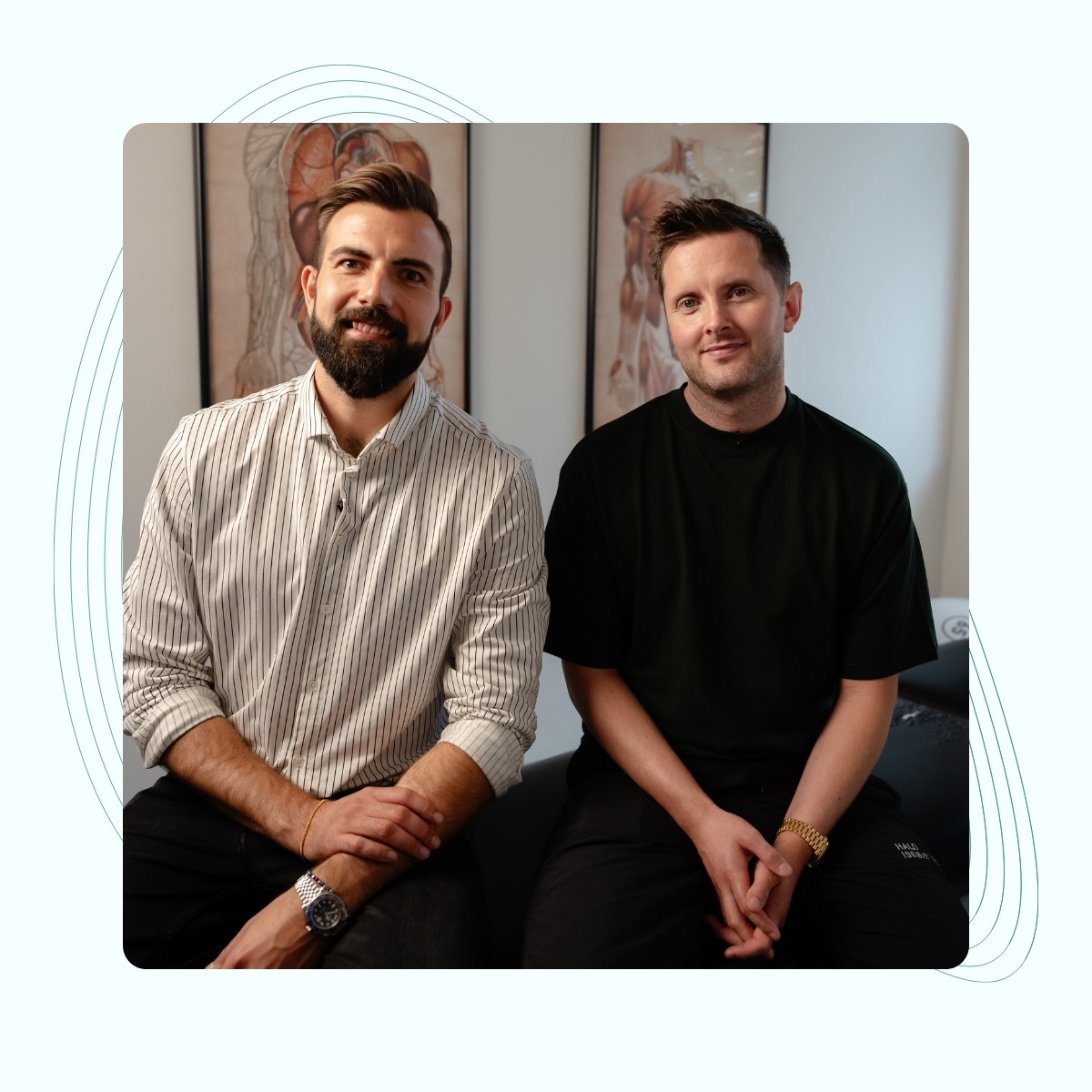We treat
Concussions
Learn more about concussions on this subpage.
Concussion
Every year, many people are diagnosed with a concussion. A concussion occurs when the brain is moved quickly back and forth, either by a blow to the head, or a rapid movement to/from the body or neck. It is possible to get a concussion without hitting your head.
Jump to section [Vis]
Concussion; a temporary functional disturbance of the brain
The brain floats in fluid inside the skull, and is therefore highly mobile, but also well protected. A concussion cannot be detected on an X-ray, CT or MRI scan, as there is no structural damage to the brain itself, as is seen with moderate or severe traumatic brain injury.
Instead, a temporary functional disturbance occurs in the brain, leading to an energy crisis, which can cause a number of symptoms.
A concussion is categorized as a mild traumatic brain injury.
Concussions are as different as people are different.
Every concussion is different, and therefore the symptom picture will vary. The majority of patients get better quickly, with total resolution of symptoms within 3-4 weeks. Approximately 20-30% of patients are expected to have late effects. Both patient groups can be effectively helped with correct management of the injury through information, guidance, education and treatment.

Second Impact Syndrome
Since a concussion does not actually return to normal until 4-6 weeks, there is a risk of so-called “Second Impact Syndrome” if a person suffers a new concussion within this period. Athletes who play sports with a high risk of concussion are therefore at increased risk of this if they are assessed as ready for sports too early. It is important that this assessment is not based solely on the patient’s symptoms, as this in itself is not a valid indicator of whether the patient has fully recovered from the concussion.
Even if you are symptom-free, you still have a concussion until your metabolism has normalized.
Even if you are symptom-free, you still have a concussion until your metabolism has normalized. Many are symptom-free after 7-10 days and return to their sport. However, the brain is temporarily very exposed and extremely vulnerable to a new injury if your metabolism has not had enough time to normalize. In Second Impact Syndrome, there is a risk of permanent damage to the brain.
PCS (Post-Commotional Syndrome)
ICD-10 (International Classification of Diseases) classifies PCS as; persistent symptoms that extend beyond the normal healing time, i.e. approx. 1 month. Elsewhere it is classified as after 3 months. It is estimated that 20-30% of all concussion patients will experience symptoms that extend beyond the “normal” healing time, which in some cases lasts months to years.
The biggest problem for this group is that they do not receive the right information, advice, guidance and treatment early in their course. The sooner you report your injury and get a diagnosis, the better the prognosis for full recovery. The best prognostic factor for whether the patient is at risk of developing late effects is related to how early they report the injury and receive the right guidance and treatment.
However, you can still fully recover from a concussion, even if you have symptoms months or years later. However, it can take time and patience, and it can be difficult to say exactly how long it will take. There is no correlation between the amount of trauma you have been exposed to and how severe your symptoms are or how long they last.
Since a concussion does not involve physical damage to the brain, an actual healing time cannot be estimated.
Instead, it is about identifying why the patient still has symptoms, and here PCS falls into 5 primary categories:
- Blood supply to the brain
- Neuroinflammation (diet/sleep/lifestyle)
- Vestibular and visual impairment
- Structures of the neck
- Psychology

Symptoms of concussion
The following symptoms will often indicate that you should seek medical attention:
- Unconsciousness
- Balance problems, i.e. difficulty standing
- Memory problems
- It’s hard to keep your attention.
The diagnosis of concussion
After a concussion accident, it is important that you seek medical attention or contact the emergency room. Here, the diagnosis of concussion will be established based on the medical history, symptoms, and results from the clinic’s consultation.
This is why you always get whiplash when you get a concussion.
Whiplash and concussion
To get a concussion, a force of between 70-120G is required to the brain mass. To get whiplash, a force of 4G is required.
This is why you always get a whiplash when you get a concussion.
This is the reason why bicycle helmets do not protect against concussions. A whiplash patient and a concussion patient often describe the same symptoms. Manual treatment of the neck and skull can therefore prove effective, as it treats, loosens and relaxes these structures.
Concussions can cause serious problems
A large percentage of those affected by concussion will suffer long-term problems. Inflammation can also occur between the meninges in front of the brain, which is even more serious, as these membranes cover centers in the brain that often control important functions in the body. Often these areas control functions of, among others, the hormonal system, memory, various organ systems and concentration.
Symptoms that 4 out of 10 people often suffer from are headaches, migraines, dizziness, fatigue, nausea, and sensitivity to light and sound.
What affects concussion symptoms?
Anything that affects brain function can and will have an impact on the symptoms that have arisen after a concussion. Fluid balance (drinking too little water), sleep (too little or too poor sleep), stress, busyness, sensory stimuli (hearing – too much noise, smell, sight – light, mobile, TV, etc.), poor lifestyle (poor diet and nutrition and too much/too little exercise, alcohol, etc.
Post Commotion
Postconcussion syndrome is a neurological syndrome in which symptoms after a concussion are persistent or long-lasting. These patients will experience one or more symptoms daily such as dizziness, headache, fatigue, memory problems, difficulty concentrating, nausea, and sensitivity to light and sound. Many may also experience personality changes, social problems, anxiety, depression, and similar psychological problems.

What happens in the brain after a concussion?
It is believed that the functional disturbance occurs due to a stretch/sheer of the axon, which is the myelinated nerve fiber between the cell body and the nerve ending. The axon lies between the white and gray matter of the brain. Because these two layers have different densities, they move at different speeds. The mechanical stretch causes the nerves to think they are about to activate/turn on. If this happens to millions of cells at the same time, it can cause a kind of electrical storm. This “storm” is short-lived (seconds/few minutes), and is the first phase (Excitatory phase) of an acute concussion.
Shortly after the injury, energy levels begin to drop by up to 20% over the next 5-7 days.
Shortly after the injury, energy levels begin to drop by up to 20% over the next 5-7 days. The brain slowly returns to a stabilized energy production, and is generally back to normal after 22-45 days. In addition, blood supply to the brain is reduced in the period after the injury by up to 50% (measured in mice).
This can create dysautonomia, i.e. a decreased function of the autonomic nervous system, whose function is to regulate the balance between the sympathetic and parasympathetic nervous systems. Likewise, the brain may have difficulty tolerating increased blood supply, which can cause symptoms during activities that require a high pulse rate, or increased brain activity/concentration.
Metabolic dysfunction
When the axon is exposed to stretch, it creates an imbalance in the sodium-potassium pump. A stimulating/excitatory neurotransmitter called Glutamate is released, which activates NMDA receptors. These increase the uptake/influx of calcium into the cell. Calcium has a high affinity/propensity to react with mitochondria, which are the energy-generating center of the cell.
This means that the mitochondria do not function optimally, which creates less energy. At the same time, there is an increased energy requirement to normalize the function of the sodium-potassium pump. This means an energy crisis occurs, which can lead to fatigue, mood swings, increased need for sleep and symptoms such as headaches and dizziness. This slowly normalizes within 22-45 days.
Duration of concussion
The duration of symptoms after a concussion varies. Some people only experience symptoms for a few days or weeks, while others develop more severe symptoms.
These can be placed within the diagnosis of postconcussion syndrome (PCS) if symptoms persist after 1-3 months. With the diagnosis of postconcussion syndrome, it is then difficult to predict how long symptoms after a concussion will last. In some cases, symptoms cannot be eliminated.

Concussion and sleep
A blow to the head, if diagnosed as a concussion, will cause a bruise on the brain or meninges. This is a huge strain on the brain itself but also on the systems that keep the brain and the environment in the brain healthy and strong. At night, recent research shows that brain activity is even more active than it is during the day.
The brain, among other things, cleans itself, sorts and processes impressions that the brain has been exposed to during the day. Therefore, a trauma to the brain (concussion) will affect the brain’s sleep.
Concussion and children
Adults as well as children can experience concussions. However, symptoms after a concussion are often more severe and frequent. Children have a higher vitality than adults, which is why they recover more quickly from a hard blow to the head. Children also have no medical history like adults, which means that there are no compensations, malpositions and other physical ailments in the body that can cause head trauma to develop long-term symptoms.
Diagnosing concussion
The diagnosis of concussion is made based on the history of the injury, symptoms and clinical findings.
Common symptoms of concussion are:
- Headache
- Neck pain
- Nausea
- Dizziness
- Fatigue
- Sleep problems: increased need for sleep, lack of sleep, difficulty falling asleep, or waking up frequently.
- Visual disturbances
- Light and sound sensitivity
- Brain fog
Less common symptoms of concussion:
- Repeated vomiting
- Balance and walking problems
- Sensory disturbances in arms/legs
- Slurred speech
Other symptoms of concussion:
- Increased irritability
- Mood swings
- Difficulty concentrating
- Memory problems
- Generally more emotional
- Sadness
- Nervousness
- Laziness

What can you do in everyday life?
-
- Prioritize your sleep – improve your sleep environment and go to bed and wake up at the same time every day (Circadian Rhythm)
-
- Prioritize a healthy and varied diet (a low-calorie diet with a high intake of colorful vegetables is recommended) – avoid large amounts of sugar and fast food, white bread (gluten) and supplement with magnesium, Vitamin B, C and D, Omega 3 as a dietary supplement, as soon as possible after the injury.
-
- Exercise daily (cardiovascular training) – this must not cause worsening of symptoms – avoid strength training in the first period if it causes worsening of symptoms.
-
- Reduce stress from everyday life – meditation/mindfulness can help calm the nervous system. Take care of only one thing at a time – avoid overloading your system and listen to your body – where is your limit? – gradually increase your tolerance to stimuli by gradually exposing yourself.
-
- Seek expert help regarding guidance and treatment of concussion symptoms
Other things about concussion
In some cases, hormonal changes can occur in the body. This is thought to be caused by damage to a small gland in the brain called the Pituitary Gland.
This has an important role in regulating the body’s vital functions and hormonal system.
In the case of a concussion, it is important to first rule out more serious illnesses, as well as rule out other illnesses such as BPPV/ear stones as a cause of dizziness, or be aware of side effects from any concomitant medication intake that may cause similar symptoms.
There is no evidence for medical treatment of concussion as a stand-alone treatment. Other treatment options include:
- Vestibular training
- Vision training (performed by a Neuro-optometrist)
What can we do about concussions?
We are experts in diagnosing and treating the aftereffects of concussions. Treatment of concussions is largely about guidance, advice, patient education and manual treatment. We examine the mobility of the neck and back, whether there are restrictions around muscles, joints and nerves that may contribute to the symptom picture. In addition, we examine the skull, whether there are dysfunctions in the meningeal system, and whether the nervous system from the cervical vertebrae and cranial nerves is functioning optimally.
Osteopathic treatment and concussion
We are experts in diagnosing and treating sequelae after a concussion. We examine the mobility in and around the skull, whether there are dysfunctions in the fluid in the brain (cerebrospinal fluid) that nourishes and protects the brain, whether the blow has caused scar tissue and restrictions in and around the layers that protect the brain, whether the meninges that cover the brain are affected and whether there are dysfunctions in the connective tissue inside the skull. We also ensure that the brain receives sufficient blood circulation to and from the skull and whether the nervous system from the cervical vertebrae and cranial nerves functions optimally.
Concussions often require physiotherapy rehabilitation (a physiotherapist specializing in concussions) to strengthen and stabilize muscles and connective tissue.
How many people recover from concussions?
A concussion occurs when the brain itself is subjected to an internal blow to the skull after a fall or similar. This blow often causes inflammation in or between the layers that protect the brain.
Around 60% of all cases will be injury-free after a year, but in many cases the concussion will follow the person for a long time.

Often related problems
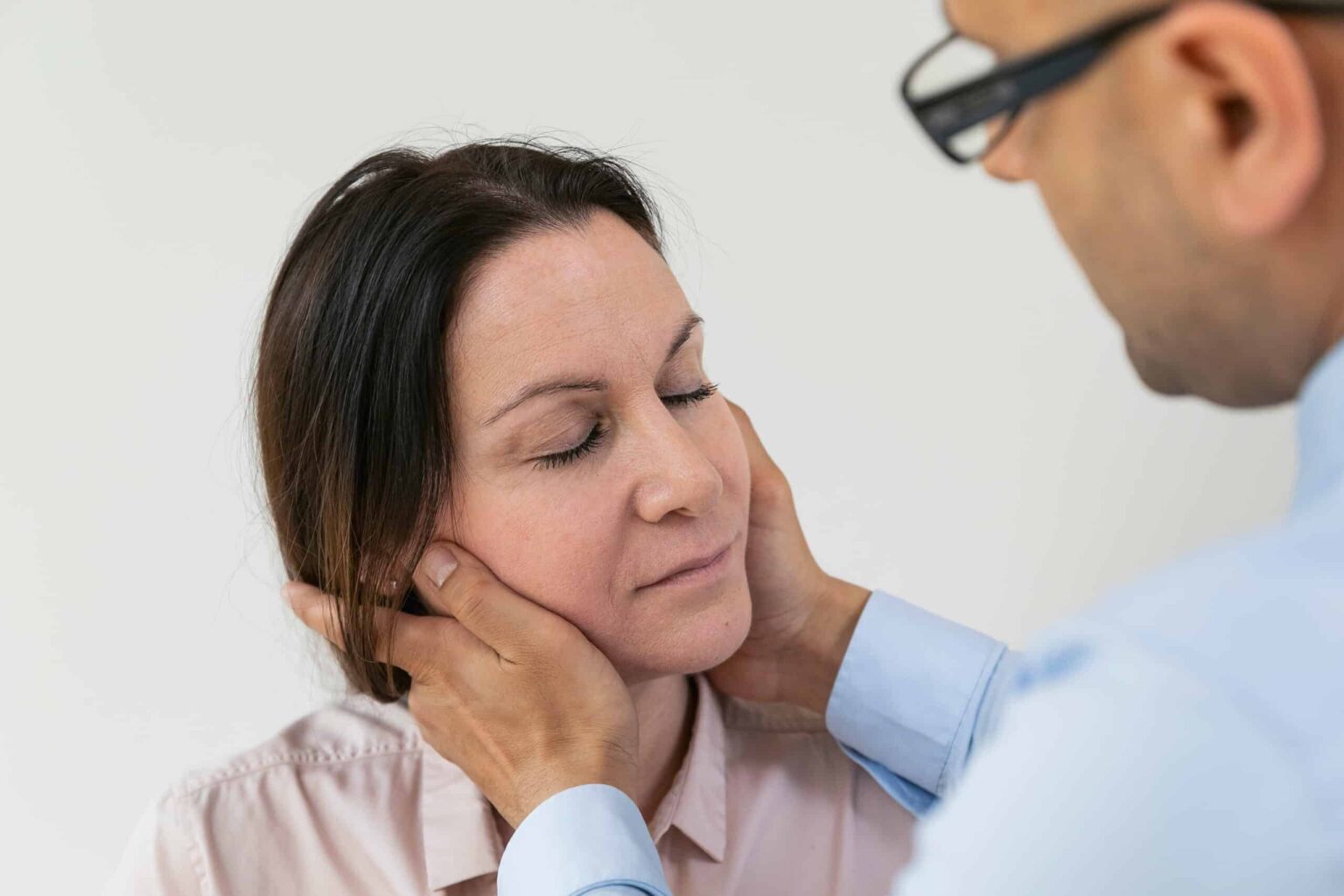
Jaw joint pain
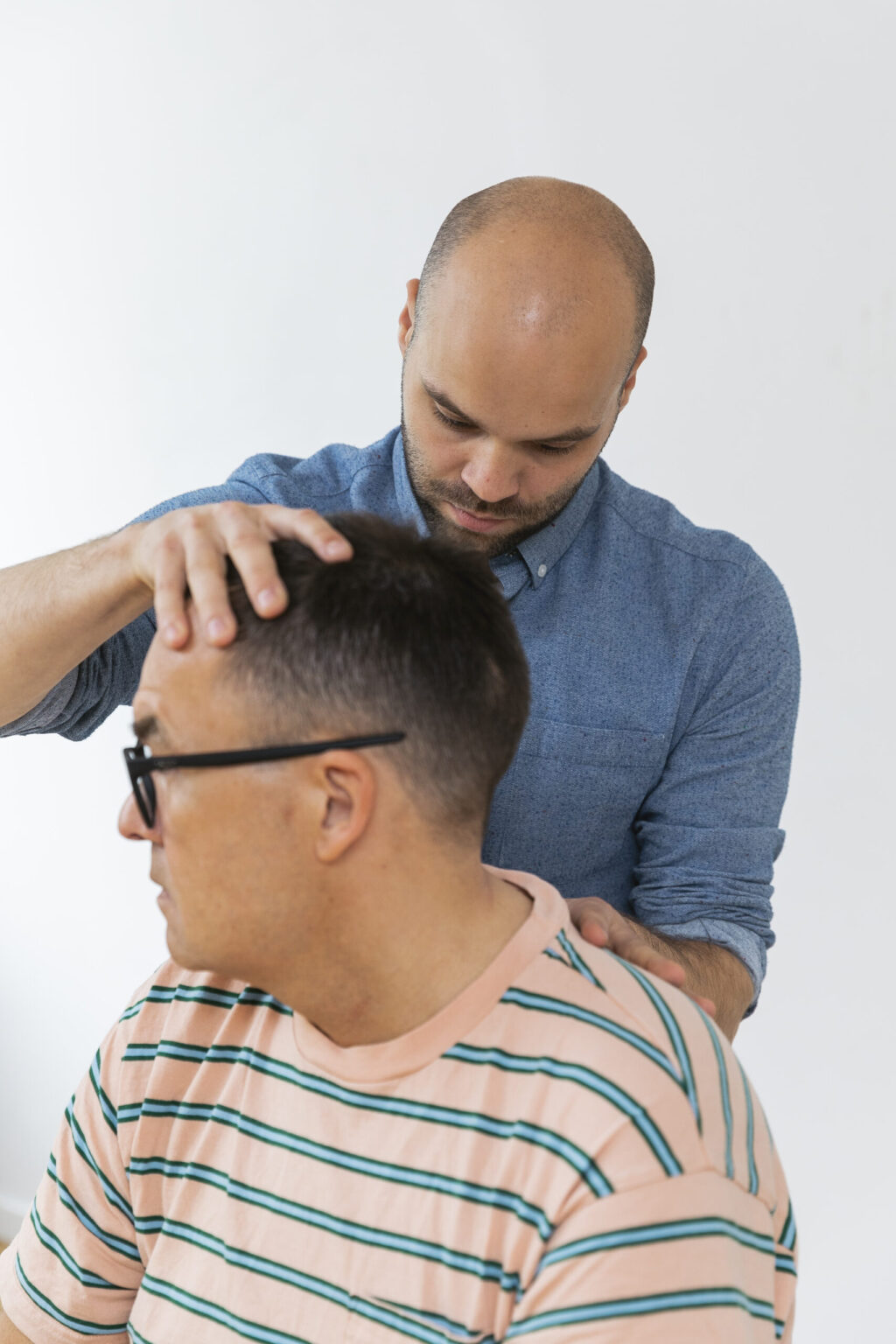
Brain hemorrhage
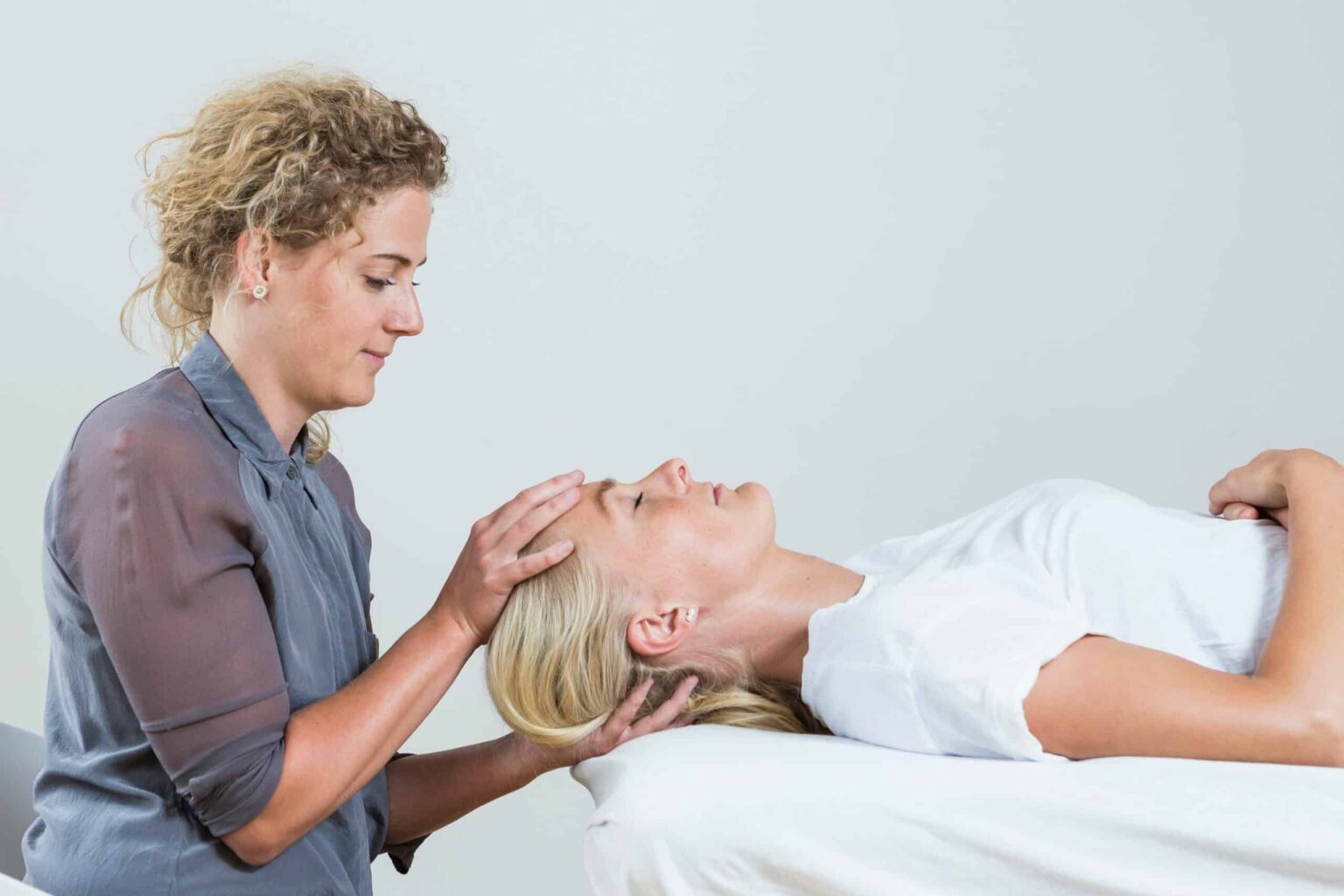
Post-traumatic headache
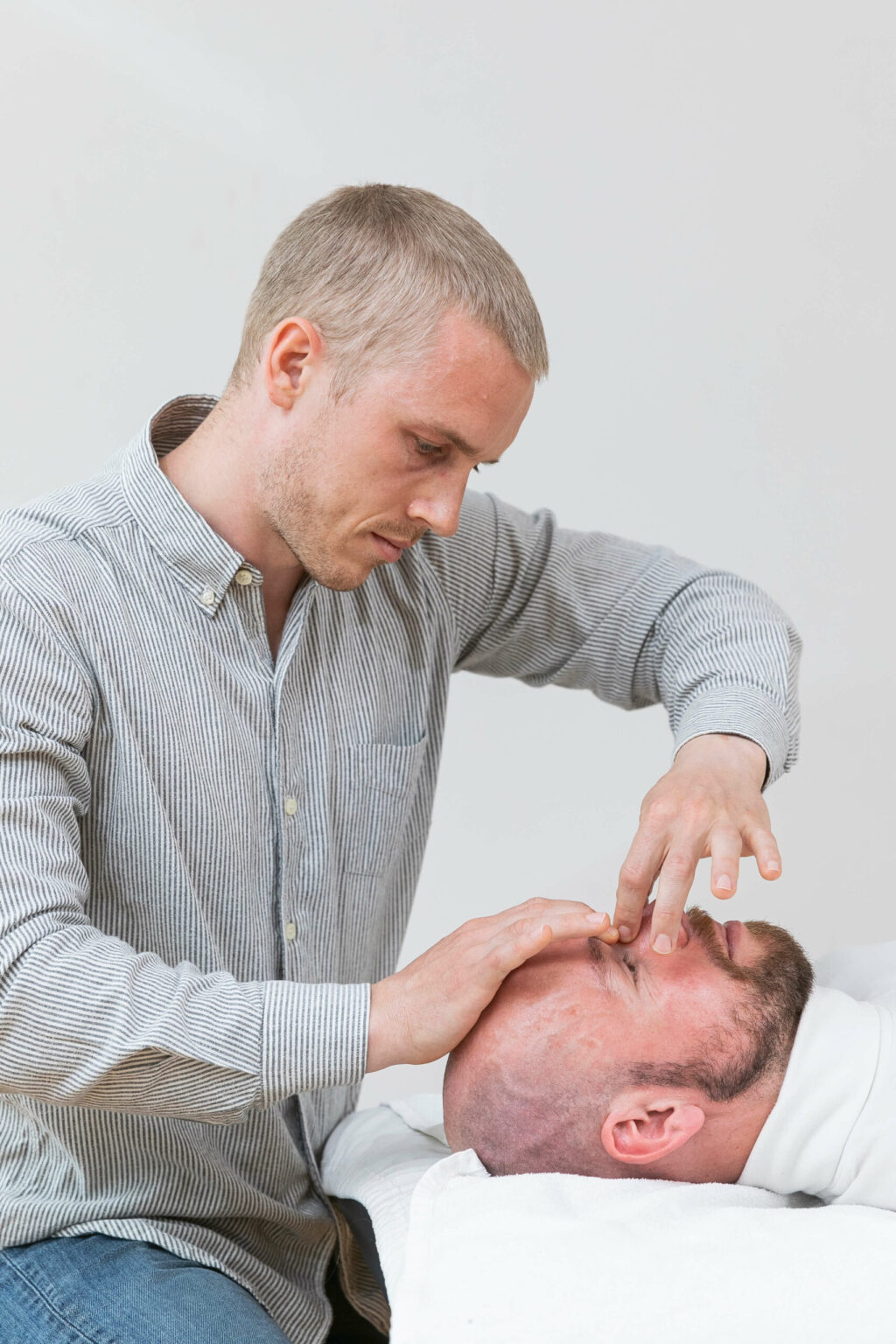
Sinusitis

Tinnitus
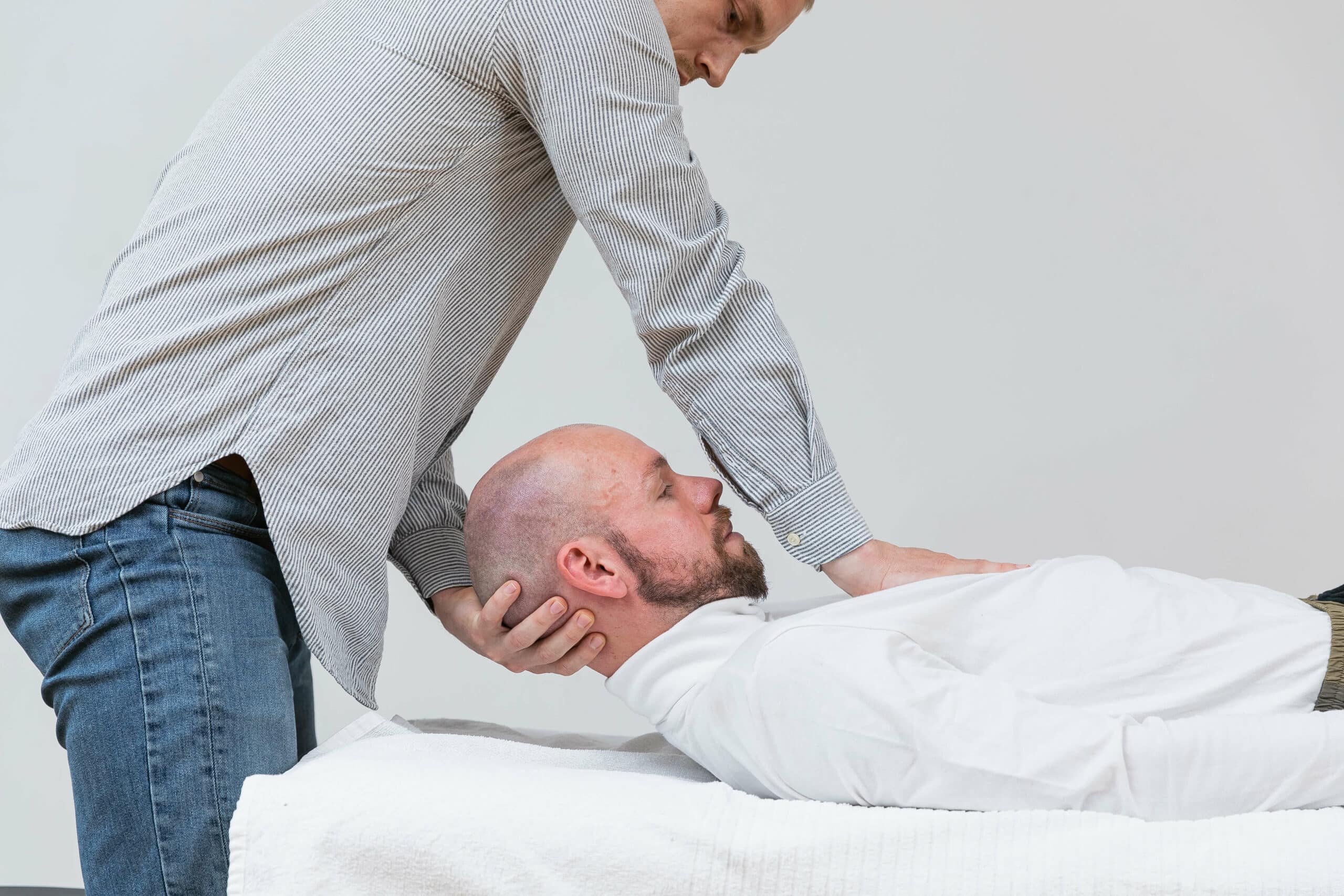
Vestibular dysfunction

Maxillary sinusitis

